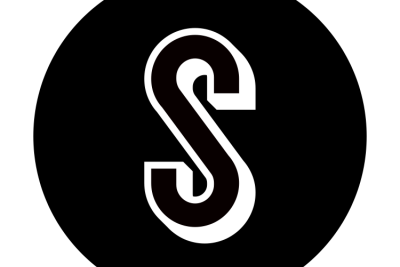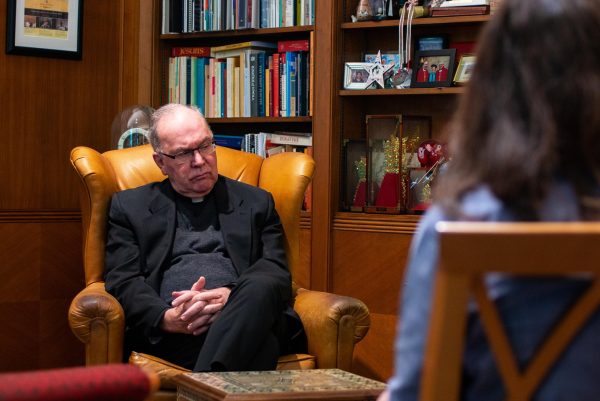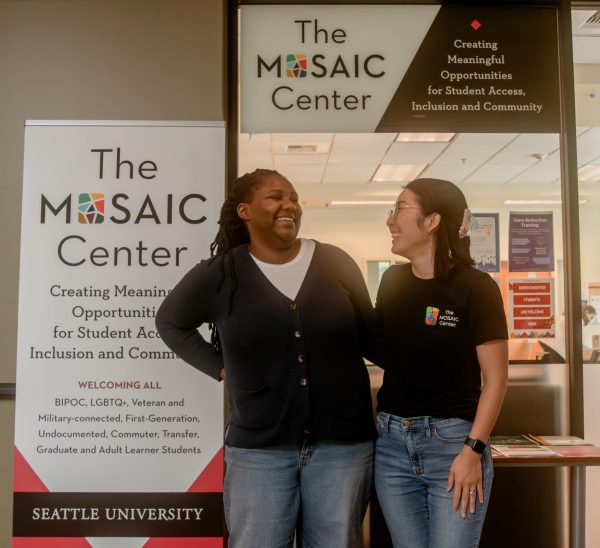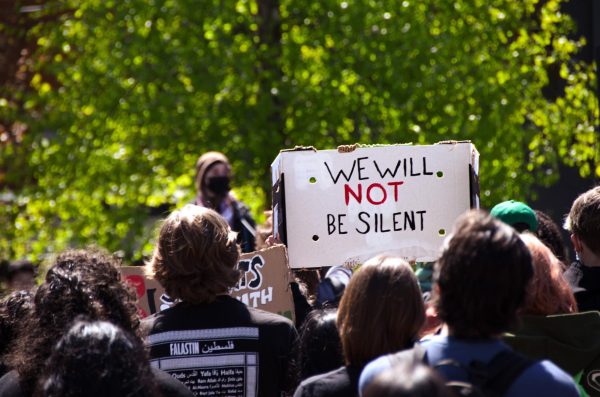Seattle University Begins Academic Year with New Leadership

Students are filling Seattle University’s classrooms, public areas and residence halls for the first time since March 2020. Seattle U enacted its Infectious Disease Response Plan on March 6 of last year and since then, the university has finished the construction of the Center for Science and Innovation (CSI), the University Honors program has changed leadership and a new president has been inaugurated. There is no doubt, it is a different university than the one upperclassmen students left 18 months ago.
The most visible change in university administrative influence is the inauguration of Seattle U’s new president, Eduardo Peñalver. As both the first layperson and Latino president of Seattle U, Peñalver brings a new perspective to the role.
During the President’s Welcome, Peñalver underlined his vision of Seattle U. “As Catholic and progressive, we’re different from institutions that identify themselves as simply Catholic or simply progressive,” Peñalver said.
He then pivoted toward the institution’s main mission, in terms notably less theological than his predecessor.
“We should never forget that what we are, above all else, [is] a university—an institution dedicated to the robust exchange of ideas,” Peñalver said.
Peñalver’s vision of Seattle U as a simultaneously liberal and Catholic university was underscored in his inaugural presidential speech, in which he mentioned the art of queer conceptual artist Félix González-Torres.
The artist created two piles with papers labelled “nowhere better than this place” and “somewhere better than this place.” Peñalver cited the artwork as an example of embracing the gifts and traditions of today while recognizing the injustices that still require a solution.
Peñalver’s emphasis on strong academics was lauded by fellow administrators.
“We’re fortunate to have Peñalver as our new president, he brings such wonderful experience. He is first and foremost a professor and a scholar,” Provost Shane Martin said.
He emphasized the president’s dedication to the enrichment of the university as a scholastic forum. “He puts the academic enterprise at the center of the university.”
Peñalver’s lengthy transition process into the role of the presidency, which became official in July 2021, allowed him to launch into his agenda without hesitation.
“President Peñalver has definitely hit the ground running with working on plans for moving forward with the strategic direction to the university and I’ve been fortunate to get to work with him directly in some meetings over the summer,” College of Arts and Sciences Dean David Powers said.
Peñalver embraced both the roles of president and student as he worked to integrate himself within Seattle U’s culture.
Michael Quinn, a professor of computer science and the dean of the College of Science and Engineering, highlighted the new president’s diligence in learning the university’s structure.
“He asked all of the leaders of the university, including the deans, to put together five page briefings for him. That gave us an opportunity to introduce ourselves to him and introduce the College of Science and Engineering. I think he studied those materials, because he seems to know a lot about us, and I think he’s off to a great start,” Quinn said.
The president is not the only new administrator approaching a new role—the University Honors Program also changed hands this summer. Formerly led by Sean McDowell, a professor of English literature who has been at Seattle U since 2002, University Honors is now under the direction of Maria Bullon-Fernandez.
Bullon-Fernandez holds an accomplished record at Seattle U as an Associate Dean for Arts and Humanities, a professor of english, medieval studies and gender studies.
Bullon-Fernandez credits her smooth transition into the role to her several years of experience in the University Honors Program.
“I’ve been teaching in Honors for almost every year since 1995,” Bullon-Fernandez said. “I’ve been involved in many committees, including search committees in the past, so I know how the program works very well.”
Coincidentally, both Bullon-Fernandez and Peñalver attended Cornell University in the mid-1990s, Peñalver as an undergraduate student and Bullon-Fernandez as a Ph.D candidate.
Bullon-Fernandez, Peñalver and the entire university are now navigating the realities of being back on an open campus. Seattle U administrators report a nervous yet excited atmosphere amongst faculty, and stress the importance of flexibility in the coming months.
“We’re so excited to see all the students face to face again, but I think it’s going to be about doing our best and flexibility. Things are going to bounce back and forth—I wouldn’t be surprised if almost everybody had at least one class that bounced back a little, that had to go remote a little bit then went back in person,” Powers said.
Seattle U has mandated COVID-19 vaccination for students and faculty, and is instituting a randomized testing regime to ensure the safety of the campus community. Those who are vaccinated against the disease are seven times less likely to catch COVID-19, though it is recommended that they still be cautious due to the recent spread of the Delta COVID-19 variant.
However, vaccines are “effective against severe disease and death from variants of the virus that cause COVID-19 that are currently circulating in the U.S.,” according to the Centers for Disease Control.
In addition to requiring vaccinations, the university has undergone an upgrade in facilities to ensure minimum risk, including upgrades to air systems and janitorial services.
According to Seattle U’s COVID-19 reponse page, 94.96% of students are currently fully vaccinated, as are 95.65% of faculty and staff. Community members unvaccinated against COVID-19 who receive medical or religious accommodations will be tested weekly as well as a random 10% sample of vaccinated students. In addition to face masks and new sanitary precautions, random testing is a “new normal” which students will experience over the course of the quarter.
As students return to classrooms, the novelty of in-person instruction is pronounced, as only the fourth-year class has experienced a full year of non-pandemic life at Seattle U. While this has obvious implications for the difficulty of re-adjusting to a new mode of learning, it also means a loss in the natural connections between classes which typically develop as a result of shared classes and dorm life.
“We’ll try to welcome people, and I’d also ask the third-years and fourth-years to reach out an extra hand and talk to the second-years who are new on campus, as well as the first-years,” Powers said.
Seattle U’s Student Involvement Fair, which took place from Sept. 27 to Oct. 1 and was hosted by the Center for Student Involvement, gave students a chance to find social activities and clubs.
One new space where students and clubs will have the opportunity to study or socialize (in addition to taking classes) is the new Jim and Janet Sinegal CSI, which began construction before the pandemic and officially opened on Sept. 10.
Through a pandemic and $153 million in fundraising and spending, the building is both a pinnacle of the former president’s fundraising ability and the new opportunities Peñalver will have to connect the university with Seattle’s economy.
“We’re still working our way into it,” Quinn said. “We have a bit of a learning curve to climb to find the way to have the best experience for the students.”
In addition to overseeing the Center for Science and Engineering’s move into the university’s newest building, Quinn also looks forward to the completion of the Bannan building’s renovation, which will be completed before the start of winter quarter.
“There will be a lot of moving happening in December and we’re just really looking forward to having all this new remodeled space, and I’m particularly excited about all the new student study spaces,” Quinn said.
He underscored the importance of students to have quality study and relaxation spaces in their free time.
“I just think it’s so important for students to have places to study or just hanging out with their friends between classes,” Quinn said.
While the university can quantify its improvements to facilities and the health of students, the intangible nature of student socialization will make it difficult to track how students new to campus are doing. Counseling and Psychological Services is still conducting services online, and offers mental health screenings and consultations to all registered students.
As Seattle U returns to in-person instruction with new leaders and buildings, it is still unclear how students will handle returning to semi-normal instruction. Moving forward, the university’s new leadership are preparing to engage with a host of potential hurdles in the search for an eventual post-pandemic normalcy.










